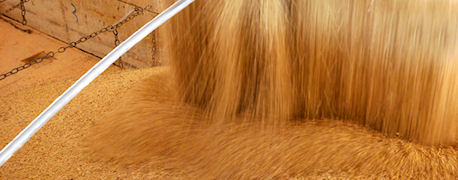November 23, 2013

Corn drying conditions look as if they will be great, but conditions can change quickly and you need to be prepared.
Make a mistake drying corn and you could lose a bin over the winter. Mismanage the drying process and you could burn through a lot of expensive fuel or electricity.
(Originally posted Sept. 12, 2012) Ken Hellevang, North Dakota State University extension ag engineer, offers the following 10 tips on drying corn efficiently, especially when it gets cold and wet later in the season:
1. Don't use natural air or low-temperature drying for corn with moisture contents of more than 21 percent.
2. Cool corn to 20-25 degrees F when outdoor temperature average is near or below freezing. Finish drying in early April.
3. Limit the corn depth to about 20 to 22 feet in bins to obtain the proper airflow rate for drying. An airflow rate of 1 to 1.25 cubic feet per minute per bushel is necessary to dry the corn before deterioration occurs.
4. Turn fans off during extended periods of rain, snow or fog to minimize the amount of moisture the fans pull into the bin. Adding heat does not help dry wetter corn.
5. If high-temperature drying, use the maximum drying temperature that will not damage the corn. That increases the dryer's capacity (bushels dried per hour) and reduces energy use. Removing a pound of water will require about 20 percent less energy at a drying air temperature of 200 F than at 150 F.
6. To prevent corn from scorching or browning during drying, limit dryer temperatures. Temperature reductions likely will need to vary for corn from field to field.
7. Another way to reduce the heat damage potential is to dry corn to 20 percent moisture content instead of 15 percent. Evaporative cooling still occurs at the higher moisture content, and the kernels will not be exposed to the heat as long when corn is dried to the higher moisture content. This also reduces stress cracks and kernel breakage.
8. Use combination drying to reduce heat damage. Dry corn at 28 percent moisture content to 20 percent using a high-temperature dryer and store it for the winter, then dry it to storage moisture in the spring using natural air drying or a high-temperature dryer.
9. Use in-storage instead of in-dryer cooling to boost the capacity of high-temperature dryers 20 to 40 percent, reduce the risk of stress cracks and remove about 1 percentage point of moisture. Start cooling immediately after transferring the corn from the dryer to the storage bin to reduce the condensation potential. To further reduce condensation, cool the corn to about 90 degrees in the dryer before placing it in storage.
10. Remove debris that accumulates during drying. It is more critical when outside air temperatures are cold because condensation can develop on the dryer, creating a wet surface where debris can collect. The debris may reduce airflow through the dryer, decreasing the dryer's capacity and creating a fire hazard.
For more information about corn drying, see NDSU's grain drying website.
About the Author(s)
You May Also Like




